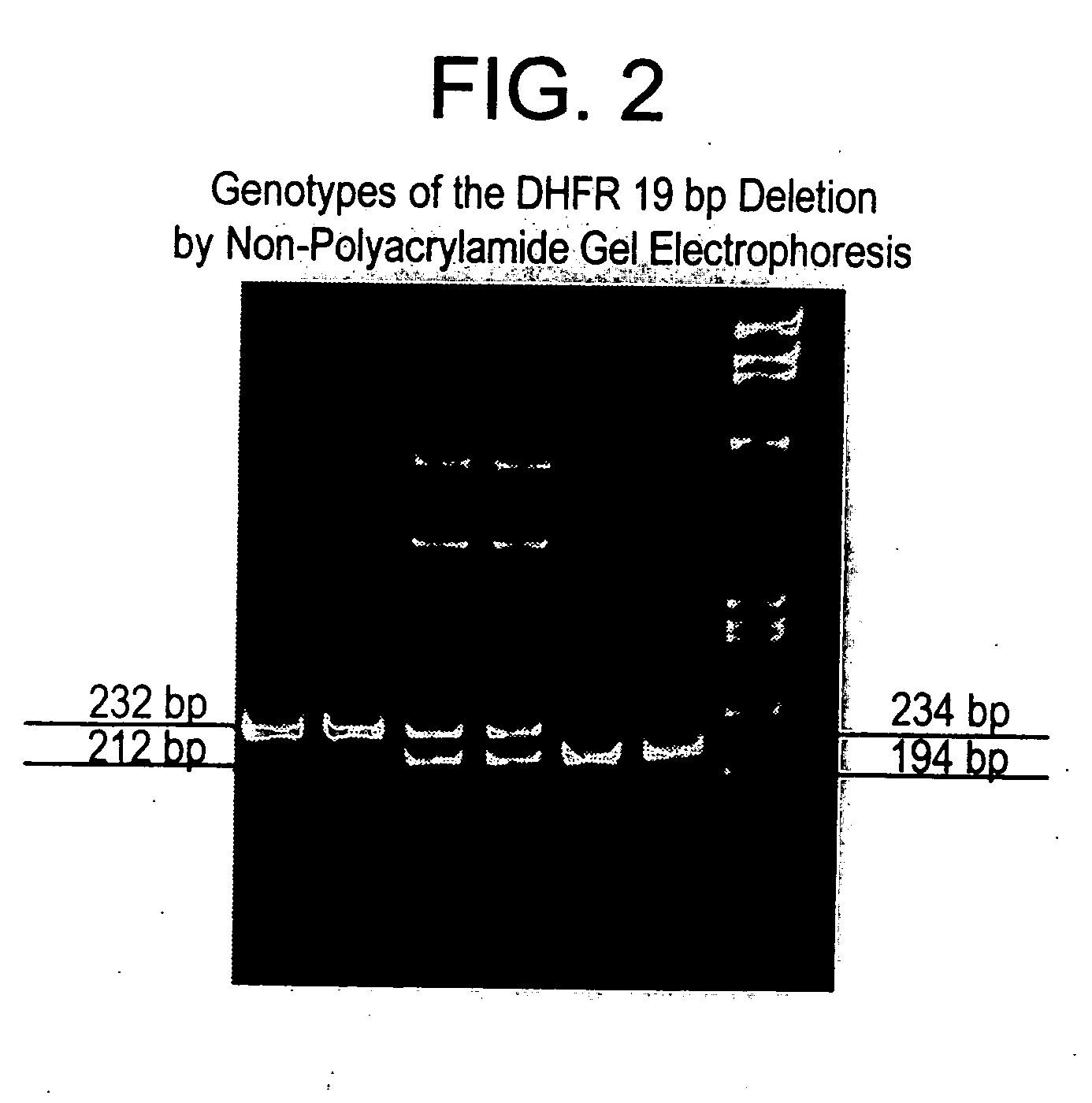Methods for diagnosing, preventing, and treating developmental disorders due to a combination of genetic and environmental factors
a genetic and environmental factor and combination technology, applied in the field of genetic and environmental factor combination combination methods, can solve the problems of difficult linkage mapping studies in schizophrenia, unconfirmed in studies of numerous other families, and diminishing the power of linkage studies
- Summary
- Abstract
- Description
- Claims
- Application Information
AI Technical Summary
Benefits of technology
Problems solved by technology
Method used
Image
Examples
example 1
Diagnosing Schizophrenia
Structure of Datafiles
[0187] Data are arranged in a file suitable for input into a binary logistic regression program (Table 8). A model is created consisting of those explanatory variables actually available from the specific patient-to-be-diagnosed and family members participating in the testing. This new combined data set (reference data set+data from patient-to-be-diagnosed with participating family members) is analyzed by binary logistic regression for the model chosen giving the predicted probability that a proband is affected with schizophrenia for all of the probands including the patient-to-be-diagnosed.
[0188] The model can be modified if required. The goodness of fit for the patient-to-be-diagnosed is checked. The predicted probability that the patient-to-be-diagnosed has schizophrenia is compared with a classification table generated from the model used to determine likelihood of false positives and false negatives. The predicted probability tha...
example 2
Distribution of Folate Gene Polymorphism Genotypes Among Schizophrenics, Schizophrenia Parents, Schizophrenia Sibs, and Controls
Summary
[0223] The DNA polymorphism-Diet-Cofactor-Development hypothesis (DDCD hypothesis, described above) postulates that schizophrenia results in part from developmental brain damage sustained in utero from the aggregate effect of maternal defects of genes related to important cofactors, e.g. folate, cobalamin, pyridoxine, potentiated by a maternal dietary deficiency of these cofactors. The maternal damage to the fetus results in part from insufficiency of these cofactors themselves and in part from resulting effects such as immune deficiency and maternal teratogens, e.g. hyperhomocysteinemia. Genes from either parent acting in the fetus may modify these damaging effects as outlined in the gene-teratogen model (described above).
[0224] The hypothesis addresses all of the unusual biological and epidemiological features of schizophrenia: e.g. the decrease...
PUM
| Property | Measurement | Unit |
|---|---|---|
| Tm | aaaaa | aaaaa |
| Tm | aaaaa | aaaaa |
| Tm | aaaaa | aaaaa |
Abstract
Description
Claims
Application Information
 Login to View More
Login to View More - R&D
- Intellectual Property
- Life Sciences
- Materials
- Tech Scout
- Unparalleled Data Quality
- Higher Quality Content
- 60% Fewer Hallucinations
Browse by: Latest US Patents, China's latest patents, Technical Efficacy Thesaurus, Application Domain, Technology Topic, Popular Technical Reports.
© 2025 PatSnap. All rights reserved.Legal|Privacy policy|Modern Slavery Act Transparency Statement|Sitemap|About US| Contact US: help@patsnap.com



